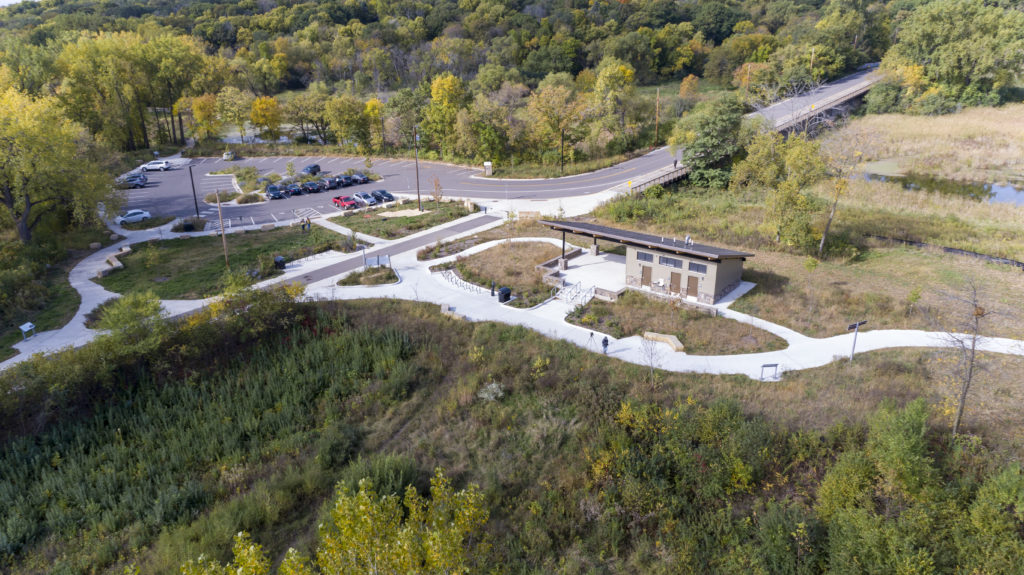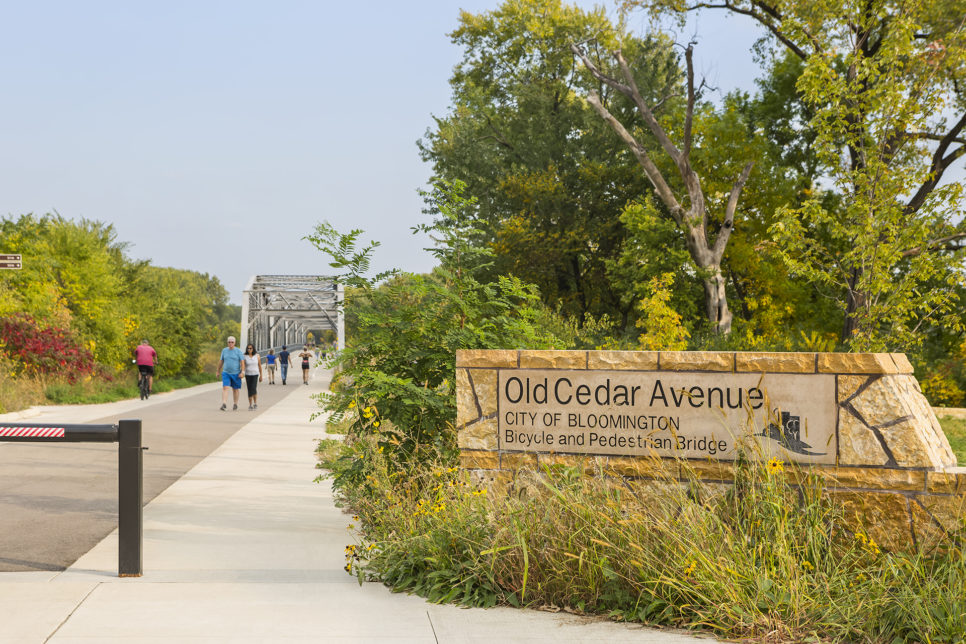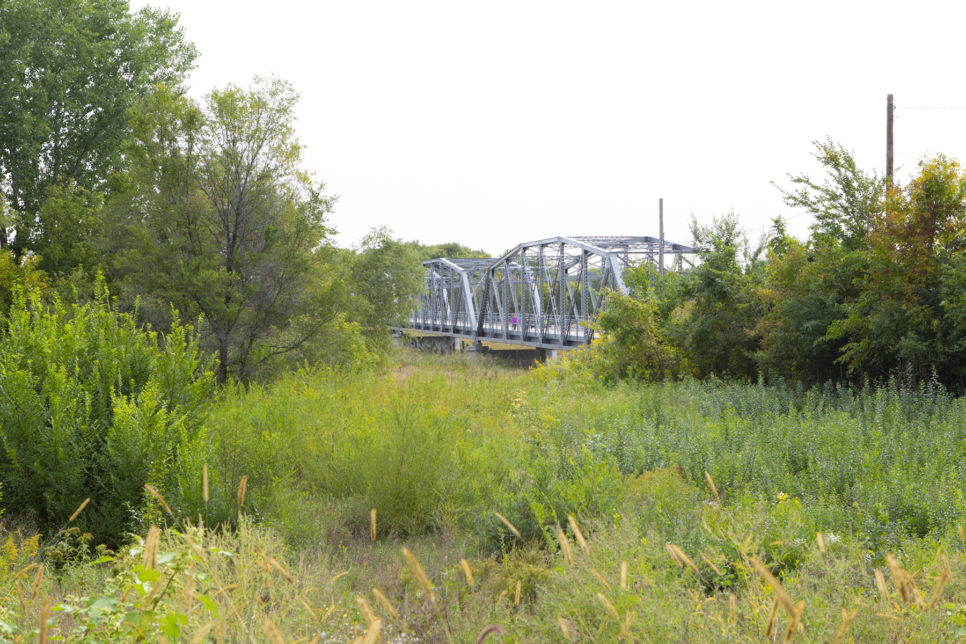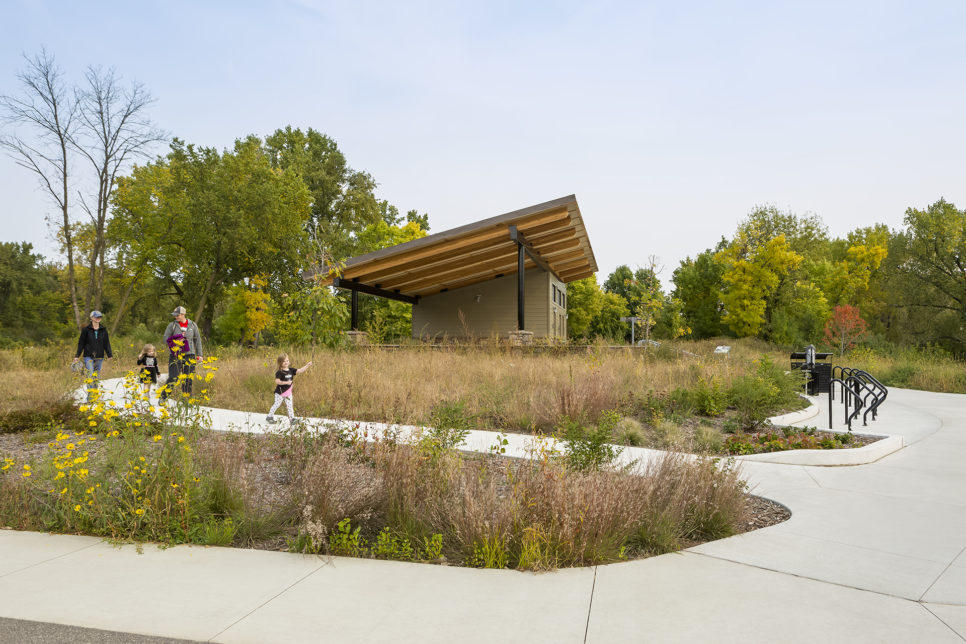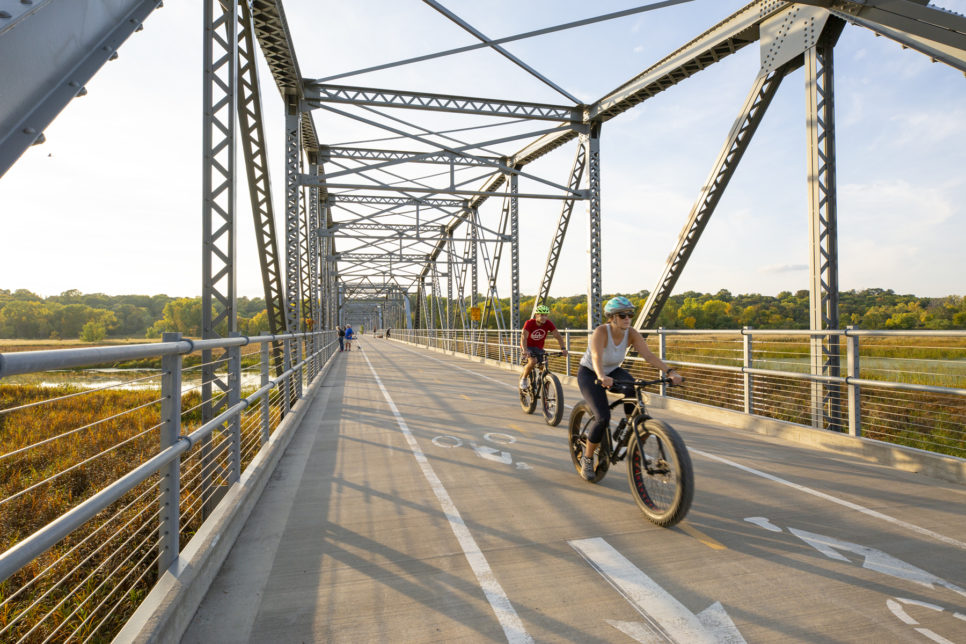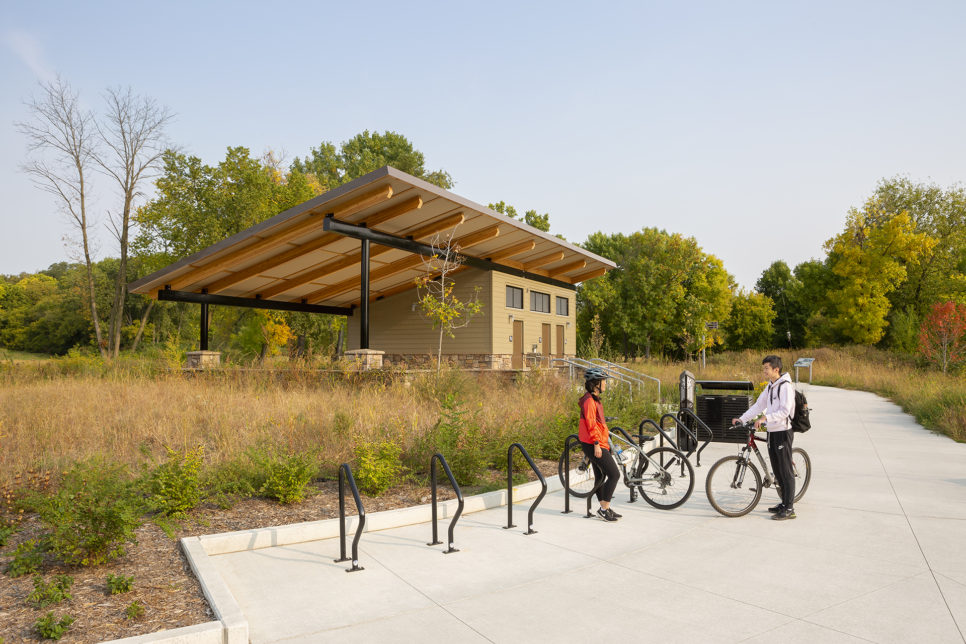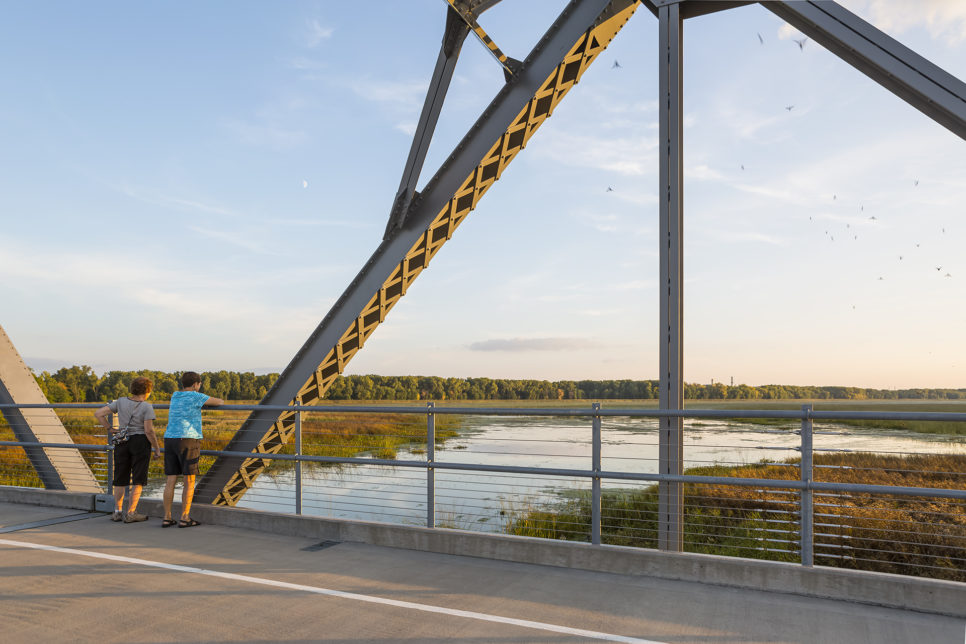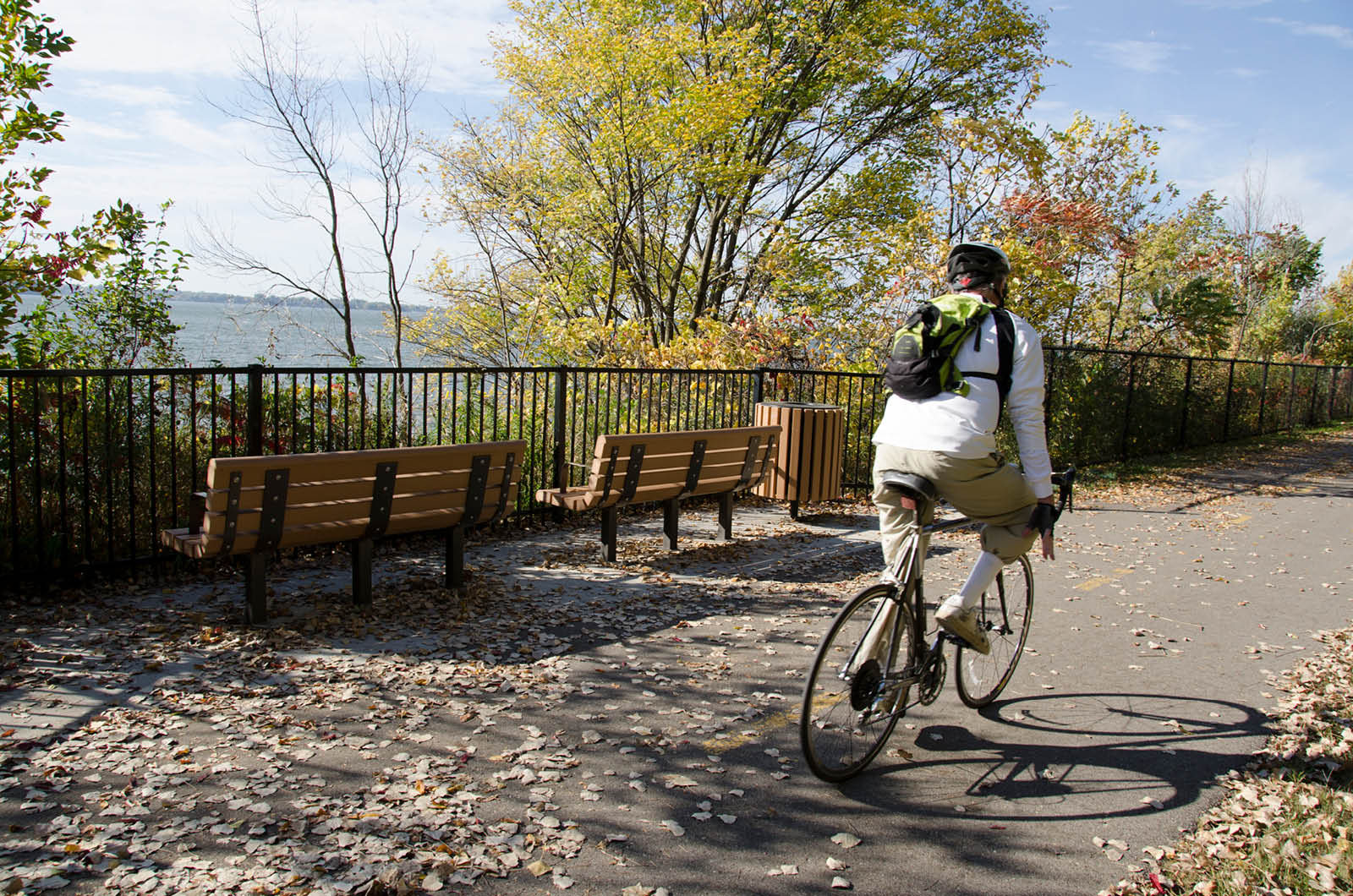Developed in collaboration with the City of Bloomington and the U.S. Fish and Wildlife Service, SRF designed an enhanced trailhead that welcomes and orients visitors to the newly rehabilitated Old Cedar Avenue Bridge and the extensive Minnesota River Valley Wildlife Refuge. The refuge is one of only a few in the country in such close proximity to a metropolitan area and is frequented by birders, bicyclists, hikers, and many student groups on field trips. SRF developed a solution that met the challenging technical requirements of building within the floodplain and providing new recreational access while also enhancing the function and appreciation of ecological systems.
The historic truss bridge is a focal point spanning Long Meadow Lake that affords sweeping views of the wetlands and adjacent bluffs, or even allows someone to drop in a fishing line. In disrepair for many years, it now provides a linkage to an extensive network of recreational trails and opportunities to experience this stopping point along the Mississippi Flyway. Key project goals also included updating the bridge to meet the Secretary of Interior’s standards for rehabilitations of historic structures which included retrofitting the deck and railings for pedestrian and bicycle usage.
Descending the bluff roadway which includes a new separated bicycle path, visitors encounter twin entry signs constructed of Minnesota limestone that frame the view to the bridge portal in the distance. The reconfigured parking area has pedestrian paths cloaked with swaths of native plantings that lead to various destinations throughout the refuge. Playful limestone benches invite sitting or climbing. The landscape architect carefully selected a pollinator-friendly plant palette in conjunction with refuge managers that enlivens the setting around the shelter building, seating nodes, and bicycle gathering areas.
Atop a slightly elevated grade for flood protection, a shelter and restroom building provides a new meeting place at the doorstep of the refuge connected by accessible paths. From the terrace underneath the shelter roof, visitors can take in views of wetlands, floodplain forest, and the historic bridge in the distance. In addition, wayfinding signs and interpretive signage enrich the arrival experience and highlight the cultural resources and natural systems unique to the site. In addition, the project spawned a new nature play area and bird-viewing boardwalk constructed by the USFWS nearby. After several phases of construction over many years, the project opened to the public again in the spring of 2020.

